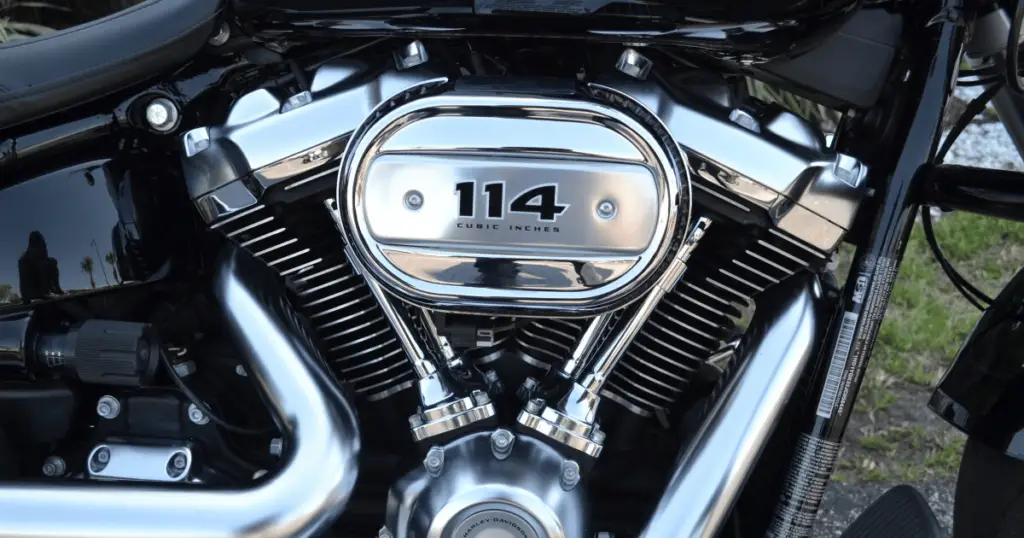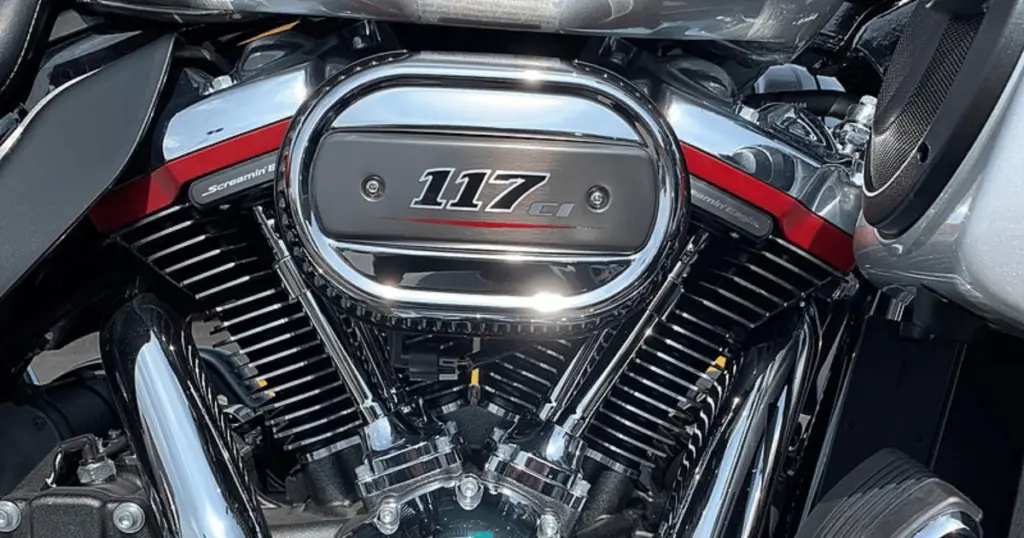Motorcycle enthusiasts often compare different engines to find the perfect balance of power and performance for their riding preferences. Harley-Davidson’s Milwaukee-Eight series offers several options, but two that stand out in terms of power and capability are the 114 and 117 engines. The 114 cubic inch (1868 cc) engine is known for its robust performance and has become a staple in many Harley-Davidson models. Its popularity stems from its balance of efficiency and power, providing a rich riding experience.
On the other hand, the Milwaukee-Eight 117 engine, with its larger displacement of 117 cubic inches (1923 cc), takes performance to another level. It is touted for producing more torque than its 114 counterpart, offering riders an elevated experience with a noticeable increase in responsiveness and acceleration. These engines not only define the ride quality but also the character of the bikes they power, making the choice between them crucial for riders seeking a specific type of journey on the open road. The specifics of these engines, from horsepower to torque, directly influence the decision-making process for potential buyers and enthusiasts looking to customize their Harleys.
Overview of Harley-Davidson’s Milwaukee-Eight Engine Lineup
Harley-Davidson’s Milwaukee-Eight engine series represents the pinnacle of the company’s engineering in V-Twin powerplants, ranging from the Milwaukee-Eight 107 to the high-displacement Milwaukee-Eight 117. Today, we’ll focus solely on the 114 and 117.
Harley 114 and 117 Engine Basics


The Harley-Davidson Milwaukee-Eight engine lineup consists of the 107, 114, and 117 cubic inch (ci) models. These engines are the heart of the brand’s touring and cruiser motorcycles, known as Big Twin engines for their larger size compared to Harley’s smaller V-Twins. Dialing into our subject at hand, the 114 ci steps up to 1,868cc, and the 117 ci, which is the largest factory-installed engine offered by Harley-Davidson, has a displacement of 1,923cc.
Each engine reflects a tier of performance within the Harley-Davidson range, with the Milwaukee-Eight 117 showcasing the highest power output and torque, followed by the 114. Their shared V-Twin configuration provides the signature Harley-Davidson rumble and power delivery that is beloved by enthusiasts.
Comparing the Harley 114 vs 117
| Feature | M8 114 | M8 117 |
|---|---|---|
| Displacement | 114 ci (1,868cc) | 117 ci (1,923cc) |
| Torque | High | Highest |
| Compression Ratio | Higher Compression than 107 | Highest Compression |
| Performance | More power & torque | Best power & torque |
| Factory-Installation | Frequently installed | High-end exclusive |
While these engines share fundamental design elements such as the precision oil/air cooling system and four-valve cylinder heads, there are critical differences in performance characteristics. The Milwaukee-Eight 117 typically offers more torque and horsepower than its counterparts, due in part to its higher displacement and optimized compression ratio. Riders often choose the Milwaukee-Eight 114 for a solid combination of power and reliability, whereas the 117 is selected for those seeking the maximum performance available directly from Harley-Davidson’s factory options.
Harley-Davidson’s engine lineup is engineered to deliver a range of experiences, from smooth touring capabilities to raw, high-performance rides. Their powerplants continue to evolve, capturing the essence of what has made the brand iconic in the world of heavyweight motorcycles.
Performance and Specifications
The precision-engineered Harley 114 and 117 engines are benchmarks in the marque’s lineup, with significant differences in power and cooling technologies that cater to a diverse rider demographic. They exhibit distinct characteristics in their performance outputs and engineering configurations.
Power and Torque Measurements
| Feature | Harley 114 Engine | Harley 117 Engine |
|---|---|---|
| Horsepower | Up to 90 hp (from modifications) | Exceeds 90 hp with potential modifications |
| Torque | Typically around 114 lb-ft | Up to 127 lb-ft at 3750 RPM |
Engine Cooling Systems
| Engine Model | Primary Cooling Mechanism |
|---|---|
| Harley 114 | Oil-cooled |
| Harley 117 | Twin-Cooled |
Riding Experience and Fuel Efficiency
When comparing the Harley-Davidson Milwaukee-Eight 114 and 117 engines, prospective buyers and enthusiasts focus on riding experience and fuel efficiency. These engines impact handling and vibration differently and boast distinct fuel economy metrics that will be discussed in the following sections.
Handling and Vibration
The Milwaukee-Eight 114 and 117 engines are designed to provide a smooth riding experience, but they handle vibrations differently. The 114 engine is known to run a bit cooler and with fewer vibrations compared to older models, enhancing the rider’s comfort on longer trips. On the other hand, the 117 engine offers superior performance, which can translate to increased engine vibrations, though Harley-Davidson’s counter-balancers largely mitigate this effect. Riders may notice a difference in vibration levels at idle, but this typically smooths out at higher speeds.
Mileage and Fuel Economy
Concerning fuel economy, the Milwaukee-Eight 114 and 117 have differences that riders should consider.
- The 114 engine generally offers a balance of power and efficiency, with riders reporting average fuel consumption figures around 45 mpg under mixed riding conditions.
- The 117 engine, with its higher displacement, delivers more power and torque. Consequently, it may exhibit a slightly lower fuel economy compared to the 114, with reported figures being closer to 41 mpg under similar conditions.
Both engines employ advanced fuel injection systems that optimize fuel delivery and combustion, but the 117’s larger displacement naturally leads to increased fuel consumption. Neither engine typically suffers from significant heat management issues, thanks to Harley-Davidson’s precision oil/air cooling system, which efficiently manages engine temperature to enhance the riding experience and maintain fuel efficiency.
Maintenance and Longevity
When it comes to the Harley-Davidson’s Milwaukee-Eight 114 and 117 engines, maintenance and longevity concerns center around reliability and the requisite service protocols. Careful attention to these engines’ maintenance needs ensures their longevity and performance.
Common Issues and Reliability
The Harley 114 and 117 engines typically showcase Harley-Davidson’s commitment to quality, but like any mechanical components, they have their known issues. The 114 engine has occasionally been discussed in terms of heat management issues, which can impact overall reliability if not addressed. On the other hand, the 117 engine, while built for higher performance, can face excessive oil consumption and sometimes suffers from vibration and camshaft related problems.
Comparison: Milwaukee-Eight 114 vs 117 Engines
| Feature | Milwaukee-Eight 114 | Milwaukee-Eight 117 |
|---|---|---|
| Heat Management | Heat management challenges | Issues with excessive oil consumption |
| Reliability | Generally reliable with proper maintenance | Potential for vibration and camshaft wear |
| Maintenance | Requires attentive service | Requires attentive service |
Maintenance Requirements
Maintenance schedules for Harley’s Milwaukee-Eight 114 and 117 engines are created to optimize the engines’ performance and reliability. Service intervals should be followed as per the manufacturer’s guidelines, with regular checks for any arising issues. The labor involved in maintaining these engines can vary, with the 117 potentially requiring more frequent attention due to its higher performance nature. Proper maintenance includes routine oil and filter changes, inspections of the camshaft and ignition system, and staying on top of any abnormal signs such as excessive oil consumption or unusual engine vibrations.
Milwaukee-Eight 114 & 117 Maintenance Recommendations
Click to expand the lists below:
-Follow standard service intervals
-Regular oil and filter changes
-Inspection of heat management systems
-More frequent maintenance may be necessary
-Vigilant monitoring of oil levels and consumption
-Camshaft and ignition system checks
-More frequent maintenance may be necessary
-Vigilant monitoring of oil levels and consumption
-Camshaft and ignition system checks
By adhering to these maintenance practices, owners can reasonably expect to sustain the performance and dependability of their Harley-Davidson 114 or 117 engines over time.
Customization and Value
When comparing the Harley 114 and 117 engines, enthusiasts typically examine the potential for personalization and the relative financial aspect of each option. These factors significantly influence a rider's choice, putting emphasis on not just performance but also on long-term satisfaction and expenditure.
Aftermarket Upgrades and Customization
The Harley 114 engine provides a robust base for riders looking to customize their motorcycles. Aftermarket support is plentiful, with a wide array of parts available for enhancing performance, such as exhaust systems, air intake kits, and tuning modules. User reviews often highlight the 114's responsiveness to such upgrades, making it a favorite among those who seek to tailor their riding experience. As for the Harley 117 engine, it comes as an upgraded version often in CVO (Custom Vehicle Operations) models, boasting higher performance metrics out of the box. Customization options are also abundant for the 117, but starting with an already enhanced engine means the incremental performance gains from aftermarket upgrades may be less noticeable than those for the 114.
Price and Ownership Costs
When assessing price and value, the 117-equipped Harley models generally carry a higher MSRP due to the increased displacement and stock performance features. For riders with a flexible budget, the initial cost might be justified by the 117's superior factory specifications, potentially reducing the immediate need for aftermarket improvements. In contrast, the models equipped with the Harley 114 engine might appeal to those who prefer a more cost-effective approach to customization, with the lower entry price allowing for a greater allocation of funds towards personalized upgrades. Ownership costs over time will vary based on the extent of customization and maintenance practices, but both engines are known for their longevity and reliability when properly cared for, enhancing their overall value proposition.
Detailed Specifications
This section provides technical details of the Harley-Davidson Milwaukee-Eight 114 and 117 engines, focusing exclusively on their dimensions, weight, and factory-installed features.
Engine Specifications (Stroke and Bore)
Bore: 102 mm
Stroke: 114 mm
Weight: Varies per model, contributes to overall motorcycle bulk
Bore: 103.5 mm
Stroke: 114.3 mm
Weight: Model-dependent, generally slightly heavier than 114
Factory-Installed Features
Clutch: Slip and assist clutch for smooth gear engagement.
Transmission: 6-Speed Cruise Drive®.
Specs: Enhanced performance with a torque of 119 ft-lb.
Wheels: Options vary by model.
ABS: Available, depending on the model and trim.
Fuel System: Electronic Sequential Port Fuel Injection (ESPFI).
Throttle Body: 55 mm diameter.
Heavy Breather Intake: Included on some models for enhanced airflow.
Seat Height: Dependent on the motorcycle model.
Clutch: High-performance clutch with hydraulic actuation.
Transmission: 6-Speed Cruise Drive® offering smooth transitions.
Specs: A step up in performance with a torque of 125 ft-lb.
Wheels: Model-specific designs, potentially larger or heavier to match the 117's power.
ABS: Available on select models.
Fuel System: High-flow Electronic Sequential Port Fuel Injection (ESPFI).
Throttle Body: Larger 58 mm throttle body for improved performance.
Heavy Breather Intake: Often standard to complement the engine's larger displacement and performance needs.
Seat Height: Varies by model, designed for ergonomics and control.